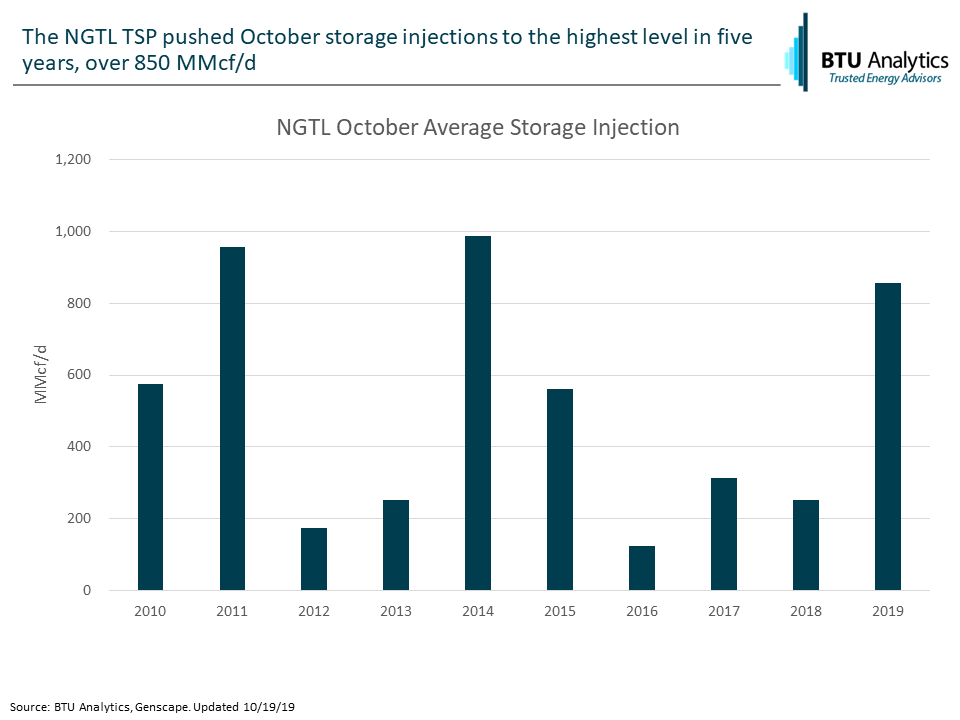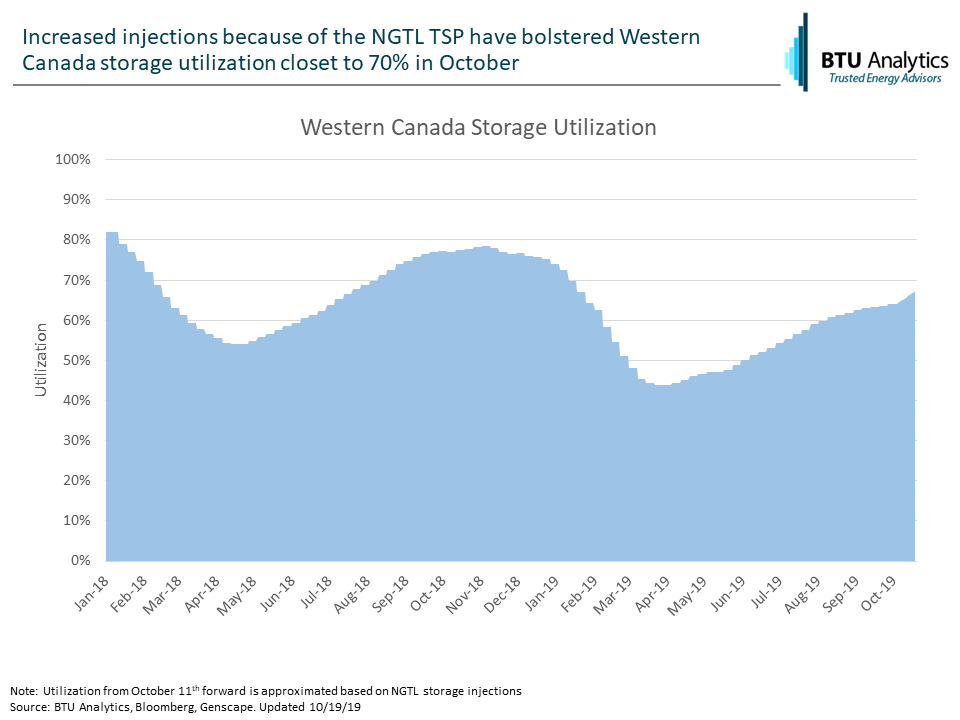Despite ongoing maintenance on TC Energy’s NOVA Gas Transmission (NGTL) and Gas Transmission Northwest (GTN) pipelines, AECO natural gas prices have rallied in October. Even with the reductions in sendout to the US, new rules on the NGTL system have sent storage injections soaring. Today’s energy market commentary will provide an update on AECO natural gas prices and potential impacts of the new rules on AECO going forward.
Natural gas exports from Canada to the US fell by 280 MMcf/d from September to October. All else equal, the loss of 280 MMcf/d of demand should weaken AECO basis even lower than it has been trading, which was around ($2.00) in September. But, AECO strengthened in October, on average trading near ($0.80) and even rising to ($0.35) in recent days. The chart below highlights the recent juxtaposition between net exports to the US and AECO basis.

AECO strength can be attributed to TC Energy’s Temporary Service Protocol (TSP), enacted in late September on the NGTL system. The TSP opens deliveries to storage to all shippers on the NGTL system. The goal is to improve system balances and indirectly reduce pricing pressure on AECO. The existing NGTL tariff defines storage as an interruptible service and prioritizes deliveries to storage only from producers with firm transport on the NGTL system. This contributed to imbalances on the NGTL system and extreme volatility in AECO pricing, particularly during periods of maintenance or during system outages. The TSP will be in place through the end of October and then again from April to October 2020, before expansions on the NGTL system enter service in 2Q2021. The expansions are intended to increase delivery capacity from the NGTL system, which is expected to improve system balances and in turn, AECO pricing, making the TSP unnecessary post expansion.
As a result of the TSP, October storage injections on NGTL rose by 750 MMcf/d from September to October. Combined with reduced exports, all else equal, there is an additional 500 MMcf/d of incremental demand in Western Canada. Increased demand is helping to bolster AECO, driven by the NGTL TSP. By reprioritizing storage injections, the TSP has resulted in October storage injections reaching the highest volume since October 2014.

At the end of September, Western Canada storage was only 63% utilized, growing to 66% utilized as of October 11th. Based on daily storage injection data on NGTL, storage utilization has likely grown to 67% as of publishing. Carrying forward the October average injection of 850 MMcf/d, storage utilization could reach 70% by the end of the month. The TSP is helping to alleviate concerns about storage levels heading into winter. Storage injections should slow in November when the TSP ceases and winter weather settles over Canada and storage withdrawals begin.

While the TSP may be ending for this year, winter temperatures will arrive in Western Canada next week. The boost to natural gas demand from colder temperatures should bolster AECO pricing offsetting the loss of the TSP provisions. Calgary average temperatures are expected to fall from around 45°F to between 25°F and 30°F in the ten-day forecast. In addition to cold temperatures, 2019 GTN pipeline maintenance is scheduled to end on October 31 and new expansion capacity is set to go into service further bolstering prices.
The arrival of winter in Western Canada will help to offset the loss of the TSP, but without additional demand, AECO dynamics are expected to return to status quo until April 2020 when the TSP takes effect again. BTU Analytics forecasts AECO basis, along with over 20 other basis points, in our Gas Basis Outlook. Request a copy today to follow our views on changing basis dynamics across North America.









